Wheel Sizes:
- Sizes XS–S: 27.5’’ front and rear
- Sizes M – XL: 29’’ front and rear (27.5’’ rear wheel compatible)
Suspension Travel:
- Frame Travel: 130 mm
- Fork Travel: 140 mm
Geometry Highlights:
- Sizes Offered: XS, S, M, L, XL
- Headtube Angle: 65° (High, MX / Low, 29’’), 65.7° (High, 29’’)
- Reach (size Medium): 468 mm (Low), 477 mm (High)
- Chainstay Length (size Medium): 432 mm (High), 435 mm (Low)
Frame Material: Aluminum
Price (full build details below): $5,299 USD / $6,999 CAD
Wheel Size: 29’’ front / 27.5” rear (29’’ rear wheel compatible)
Suspension Travel:
- Frame Travel: 150 mm
- Fork Travel: 160 mm
Geometry Highlights:
- Sizes Offered: S, M, L, XL
- Headtube Angle: 64° (High, MX / Low, 29’’), 64.7° (High, MX / Low, 29’’)
- Reach (size Medium): 460 mm (High, MX / Low, 29’’), 469 mm (High, 29’’)
- Chainstay Length (size Medium): 432 mm (High, MX / High, 29’’), 435 mm (Low, 29’’)
Frame Material: Aluminum
Price (full build details below): $5,549 USD / $7,399 CAD
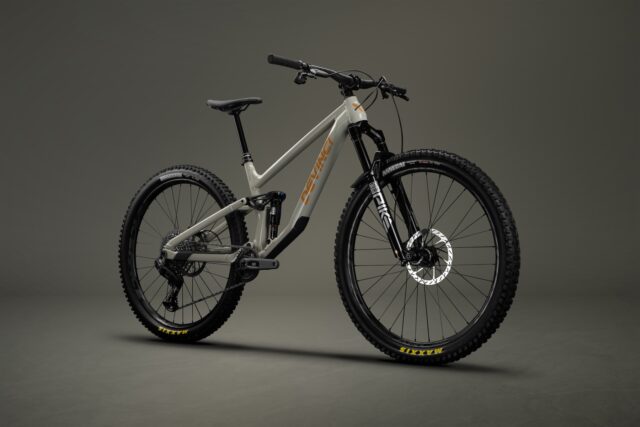
Intro
The folks at Devinci have grown their Trail bike offering, with two models now under the Troy family name.
The all-new Troy ST slots in as a lighter-duty 130mm-travel option, while the Troy remains Devinci’s hard-hitting Trail bike, with a 10 mm bump in rear-wheel travel from the prior version, up to 150 mm. With Canadian-made aluminum frames and lots of configuration options from these two new models, there is a lot to cover — read on for more.
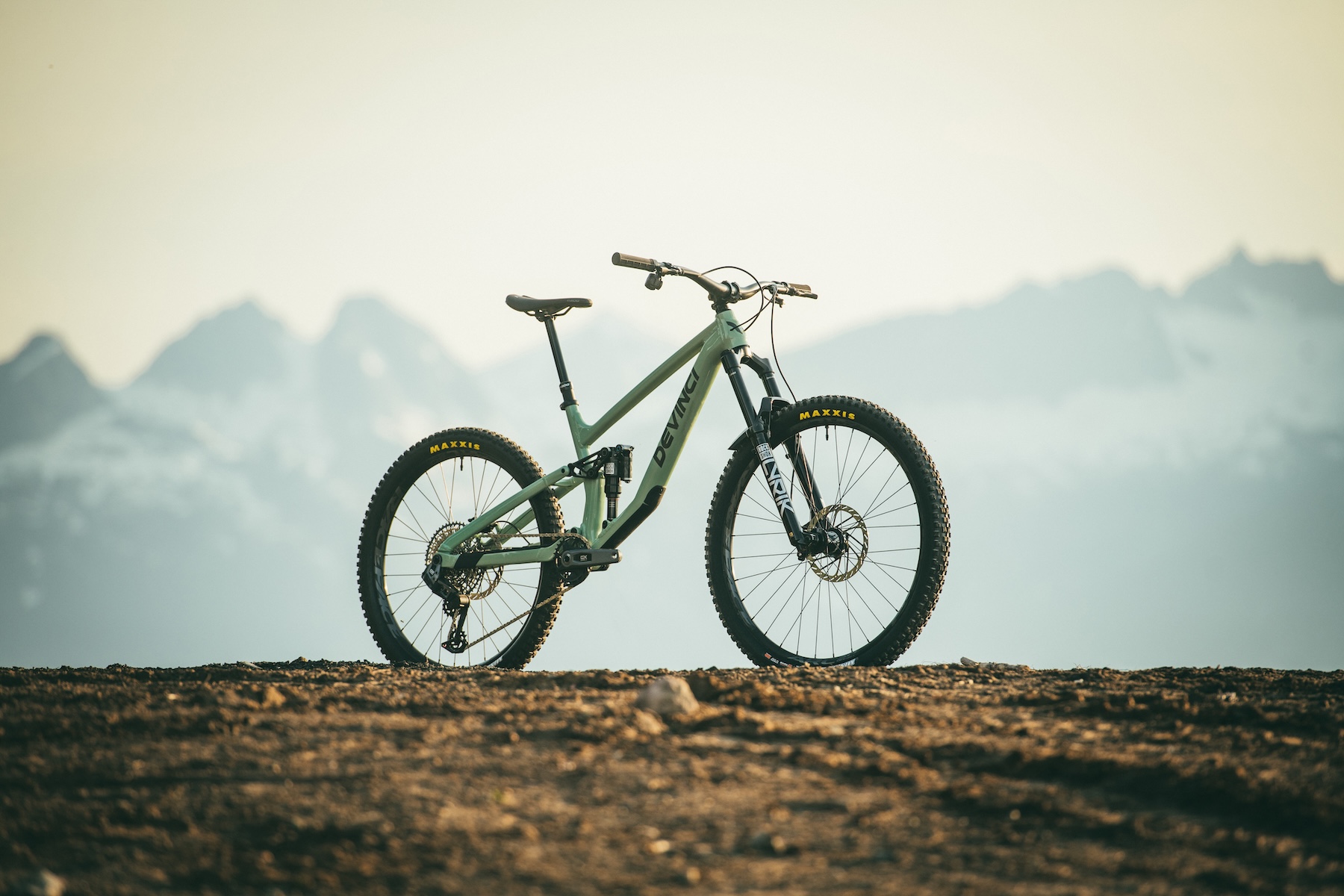
The Frames
The last refresh of the Troy was back in 2021, with carbon, aluminum, and mixed carbon / aluminum frame options available for the 140mm-travel platform, but a lot has changed since then.
Devinci has doubled-down on their Canadian manufacturing, with all of their recent releases (e.g., E-Troy and E-Troy Lite) being hand-welded aluminum frames from their factory in Quebec. Plus, their bikes all come with a lifetime warranty as a testament to Devinci’s confidence in their work.
The Troy and Troy ST are Devinci’s latest creations and share a familiar aesthetic, but each have their own unique intention within the broad “Trail bike” category:
Troy ST
The Troy ST is, as the “ST” implies, the short-travel option within the Troy lineup. This new aluminum frame delivers 130 mm of travel out back matched to 140 mm up front, with the frame still relying on Devinci’s familiar Split Pivot suspension design licensed from Dave Weagle.
While Devinci does not specify the suspension kinematics for the new Troy lineup, the Troy ST claims coil-shock compatibility thanks to an amply progressive leverage curve. Beauty is of course in the eye of the beholder, but I find the new frames to be a significant cosmetic upgrade over the almost too-angular prior design, with a new low-slung top tube and simple yet stout-looking aesthetic.

The Troy ST gets dual 29’’ wheels in the Medium through XL sizes, though the XS and Small sizes downsize to 27.5’’ wheels front and rear. Devinci’s use of a flip chip at the lower shock mount also allows users to change geometry in the stock wheel configuration, or opt for a mixed-wheel setup via the “High” position.
Devinci appears to have sweat the details when it comes to the feature set of the new Troy lineup, which are shared across both the Troy ST and longer-travel Troy. New for Devinci is their “Shed” downtube storage system, and double row bearings are used for durability at certain pivot points that see higher loads. The frames also have ISCG mounts for chain guides and have officially adopted the near-ubiquitous SRAM UDH hanger standard.
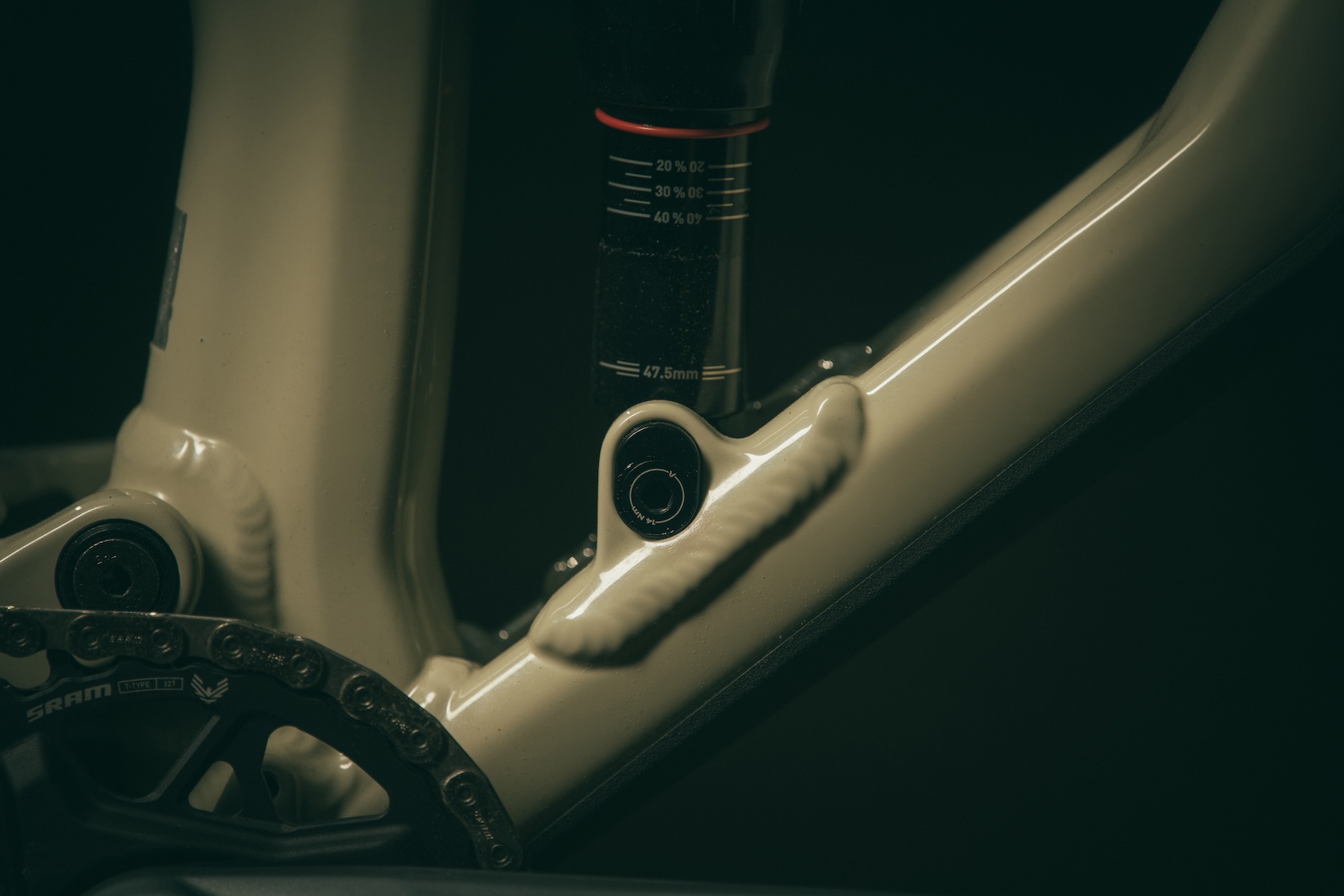
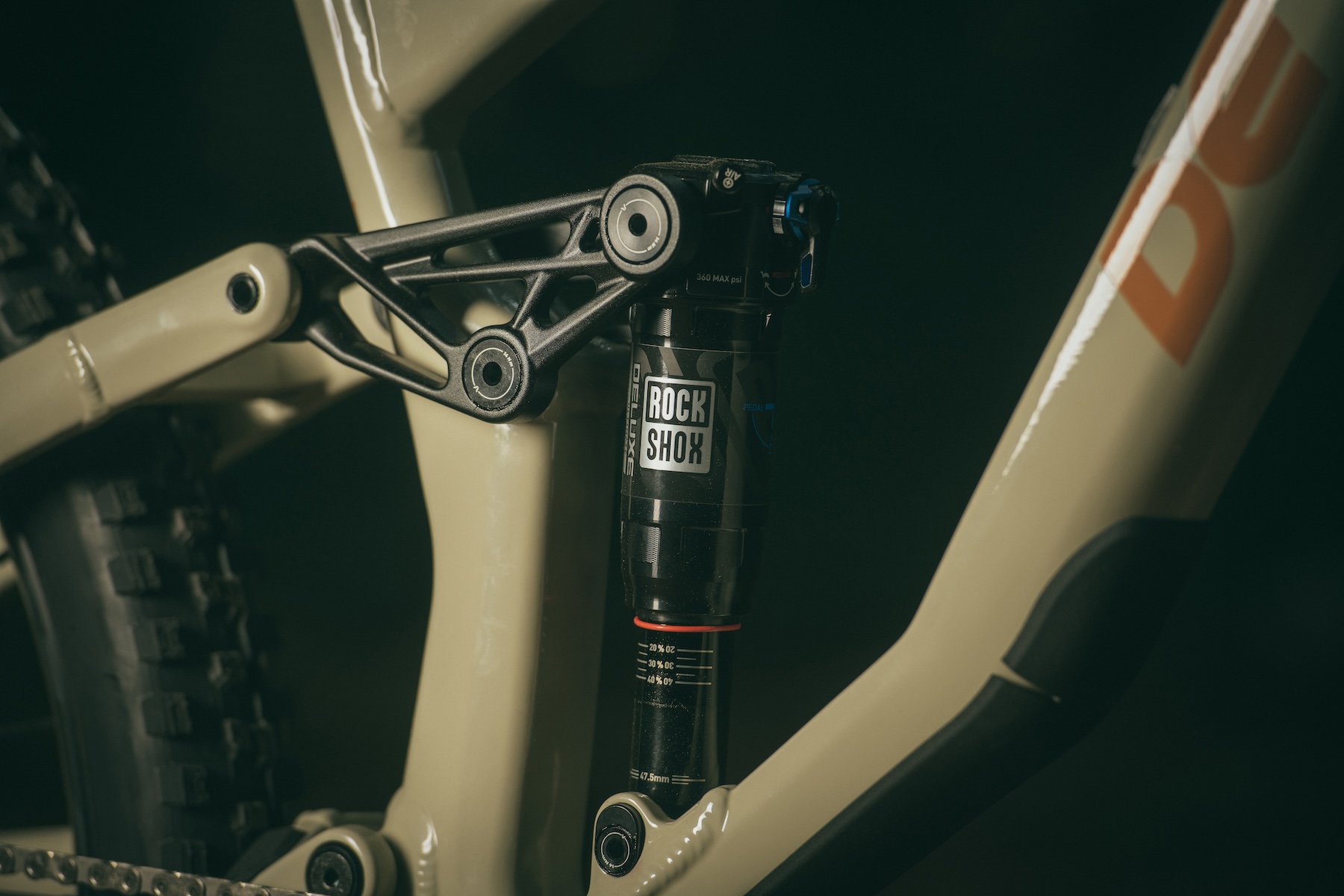

Troy
From afar, the standard Troy’s frame appears indistinguishable from that of the Troy ST, but its 150 mm of rear travel (up from 140 mm on the prior Troy) and 160 mm fork convey more aggressive intentions. The new Troy also comes from the factory with a mixed-wheel setup, requiring the “High” flip chip position. Buyers with a preference for bigger wheels can convert to 29’’ wheels and use either the “High” or “Low” settings to dial in their preferred geometry.
Perhaps it is due to issues of wheel clearance, but the Troy is limited to four sizes from S – XL, omitting the XS size found with the Troy ST.
Otherwise, both frames share the same finishing details, including the “Shed” downtube storage, double row pivot bearings, ISCG tabs, and UDH hanger.
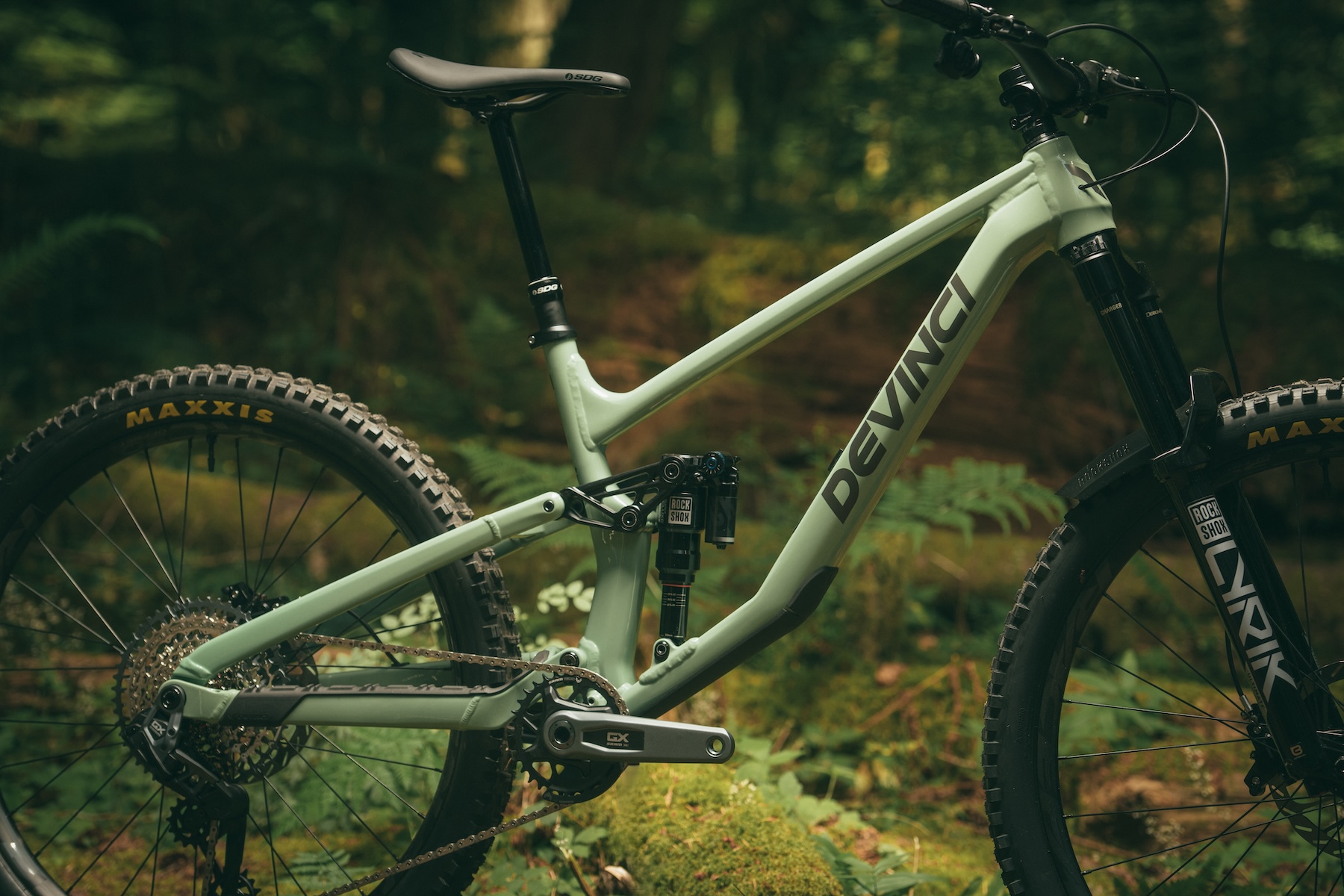
Fit & Geometry
Troy ST
Short-travel Trail bikes can take myriad directions when it comes to geometry, and while its reach figures are a bit on the longer side, the Troy ST takes a fairly middle-ground approach. A size Medium in the “High” geometry position gets a lengthy 477 mm reach, a 65.7° headtube angle, fairly low 608 mm stack height, and compact 432 mm chainstays. Swapping between “High” and “Low” positions affects nearly every geometry figure, with the “Low” position moving to a 468 mm reach, a 65° headtube angle, slightly taller 615 mm stack, and 435 mm chainstays.
The effective seat tube angle changes between positions too, from 79.4° in “High” to 78.6° in ”Low”, but is quite steep across the board. Steep seat tube angles can be great for steep climbing but can put a bit too much weight on your hands on flatter terrain, so we’re curious to see how the Troy ST feels in practice.
While we used the Medium as the reference size here, it’s worth noting that the chainstay lengths measure at 432 mm in “High” for XS – Medium sizes, but the chainstays jump by 10 mm to 442 mm in “High” on the Large and XL. We are big fans of size-specific chainstays here at Blister, so it’s great to see longer chainstay measurements to maintain front / rear weight balance for taller folks, especially considering the rather long reaches on the Troy ST.
Devinci also says that the Troy ST is mixed-wheel compatible, with a smaller 27.5’’ rear wheel requiring the frame’s “High” geometry position and having nearly the same geometry as a 29’’ rear wheel in the “Low” position.
The full geometry chart for the Troy ST is below:
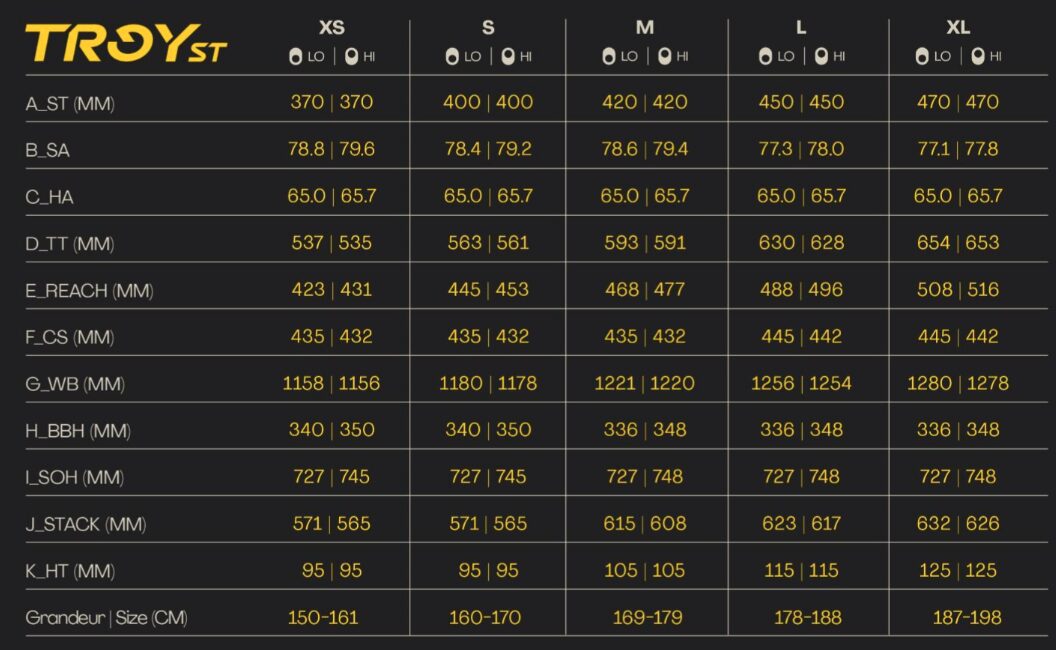
Troy
With its increase to 150 mm of rear travel and 160 mm up front, the Troy is flirting with the line between Trail and Enduro bikes, and it comes with geometry to match. With the stock mixed-wheels configuration, which requires using the “High” geometry position, a size Medium Troy has a 460 mm reach, a 64° headtube angle, fairly low 622 mm stack height, and 432 mm chainstays. Those numbers are fairly consistent with a full 29’’ wheel setup in the “Low” position (aside from the chainstays, which grow to 435 mm in “Low” with a 29’’ rear wheel). A 29’’ wheel in “High” position sees a longer 469 mm reach, steeper 64.7° head tube angle, and 432 mm chainstays.
As with the Troy ST, there are size-specific chainstays on offer, with the Large and XL Troy getting a 10 mm bump over the ones used on the Small and Medium frames.
Full geometry figures for the Troy are included in the chart below:
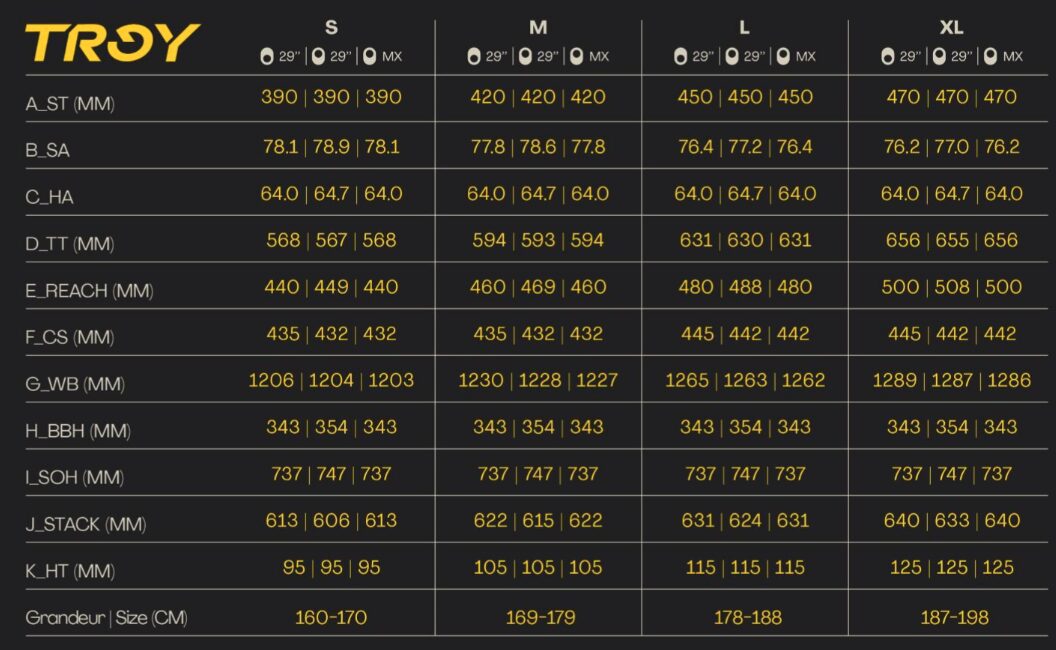
The Builds
Troy ST
Simplicity is the name of the game when it comes to Devinci’s build options for both the Troy ST and Troy — there’s just one on offer for each model, and it’s the GX AXS build.
In the case of the Troy ST, that means a RockShox Pike Ultimate fork and Deluxe Ultimate rear shock, along with SRAM’s GX Transmission kit. Most finishing parts are provided by Race Face, including the wheels, which are ARC30 rims laced to their Vault hubs. Though they aren’t the burlier Exo+ casing that I might prefer, the Maxxis Assegai front and Dissector rear tire combo in the Exo casing seem pretty sensible for a bike with 130 mm of rear travel.
The only real letdown here in my view is the SRAM Level brake set — frankly, the Levels seem to feel underpowered on just about any bike in my experience, and I’d rather see Codes here. That said, props to Devinci for opting for 200 mm HS2 rotors front and rear, and also for their use of fairly long dropper posts at each size interval.
Build specs are as follows:
- Drivetrain: SRAM GX Transmission
- Brakes: SRAM Level Silver (200 mm rotors)
- Fork: RockShox Pike Ultimate (140 mm)
- Shock: RockShox Deluxe Ultimate
- Wheels: RaceFace ARC 30 rims / Vault hubs (XS – SM: 27.5’’ wheels, M – XL: 29’’)
- Dropper Post: SDG Tellis (XS: 125 mm, S: 150 mm, M: 180 mm, L: 200 mm, XL: 220 mm)
Troy
The Troy shares the single “GX AXS” build option with its little brother, but the Troy gets substantially burlier parts in most areas. RockShox again provides suspension, this time with a 160mm-travel Lyrik Ultimate up front and Super Deluxe Ultimate out back. The GX Transmission shifting remains, again matched with finishing parts from RaceFace, including the same ARC30 rims and Vault hubs used on the Troy ST.
The Troy gets leveled-up in the brakes and tires department in particular. 200 mm HS2 rotors are still used, but with the more powerful Code Silver brakes from SRAM. The Maxxis tires use a beefy DoubleDown casing, which perhaps points to Devinci’s expectation that the Troy will see some heavy-duty terrain, though the choice of a DHF front tire is increasingly rare given the popularity of the more forgiving Assegai (the Troy’s rear tire is a DHR II).
Build details for the Troy are as follows:
- Drivetrain: SRAM GX Transmission
- Brakes: SRAM Code Silver (200 mm rotors)
- Fork: RockShox Lyrik Ultimate (160 mm)
- Shock: RockShox Super Deluxe Ultimate
- Wheels: RaceFace ARC 30 rims / Vault hubs (29’’ front / 27.5’’ rear)
- Dropper Post: SDG Tellis (S: 150 mm, M: 180 mm, L: 200 mm, XL: 220 mm)

Some Questions / Things We’re Curious About
(1) Despite a 20 mm difference in travel, the Troy ST and Troy are quite similar in other ways — how different are their on-trail manners?
(2) Prior iterations of the Troy have typically been surprisingly stout for having only 140 mm of travel — does the new Troy and its extra 10 mm of travel help unlock more descending prowess?
Bottom Line (For Now)
Devinci’s focus on making aluminum bikes in Canada is unique in a world where most brands are looking to the Far East for their manufacturing, but the new Troy ST and Troy stand out for other reasons too. Both bikes look to punch a bit above their travel classes with sensible geometry figures and well-considered builds — qualities that a lot of folks look for in modern Trail bikes. Consider us intrigued by the new Troy family, and hopefully we can ride both the Troy ST and Troy soon.
